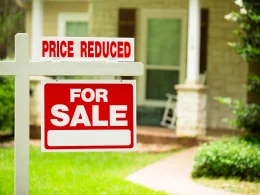Introduction
In the world of real estate transactions, an “appraisal gap” is a term that has gained prominence, particularly in competitive markets. Understanding this concept is crucial for both buyers and sellers as it can significantly impact the outcome of a deal.

The Basics of Appraisal in Real Estate
An appraisal is a professional assessment of a property’s value conducted by a licensed appraiser. It’s an essential step in a real estate transaction, as it ensures that the property’s sale price aligns with its fair market value. Lenders require appraisals to determine the appropriate loan amount based on the property’s value.
What Causes an Appraisal Gap?
An appraisal gap occurs when the appraised value of a property is lower than the agreed-upon sale price. This discrepancy can arise due to various factors, including a rapidly changing market, multiple offers driving up prices, and emotional bidding wars. When an appraisal gap happens, it can create challenges for both buyers and sellers.
Navigating Appraisal Gaps for Buyers
For buyers, an appraisal gap can lead to complications. If the appraised value falls short of the purchase price, lenders might not be willing to approve a loan for the full amount. In this situation, buyers typically have a few options:
- Renegotiation: Buyers can negotiate with the seller to lower the purchase price to match the appraised value, reducing or eliminating the gap.
- Increase Down Payment: Buyers can choose to increase their down payment to cover the gap between the appraised value and the purchase price.
- Walk Away: If the gap is substantial and the seller is unwilling to lower the price, buyers might decide to walk away from the deal.
Seller Strategies for Dealing with Appraisal Gaps
Sellers also need to be prepared for the possibility of an appraisal gap. Here’s how they can navigate this situation:
- Renegotiate: Sellers can consider negotiating with the buyer to find a middle ground that works for both parties. This might involve reducing the price slightly or offering other incentives.
- Provide Information: Sellers can provide the appraiser with information about recent improvements to the property, comparable sales in the area, and any unique features that might justify a higher value.
- Consider Backup Offers: If the deal falls through due to an appraisal gap, sellers can reach out to backup offers they might have received during the initial listing period.
Conclusion
In conclusion, an appraisal gap occurs when the appraised value of a property is lower than the agreed-upon sale price, creating challenges for both buyers and sellers. Navigating this situation requires careful consideration and communication between the parties involved. Buyers may need to adjust their financing or negotiate with the seller, while sellers can explore strategies to justify the agreed-upon price or find common ground with the buyer. Being well-informed about appraisal gaps empowers both buyers and sellers to make informed decisions and navigate the complex landscape of real estate transactions.












